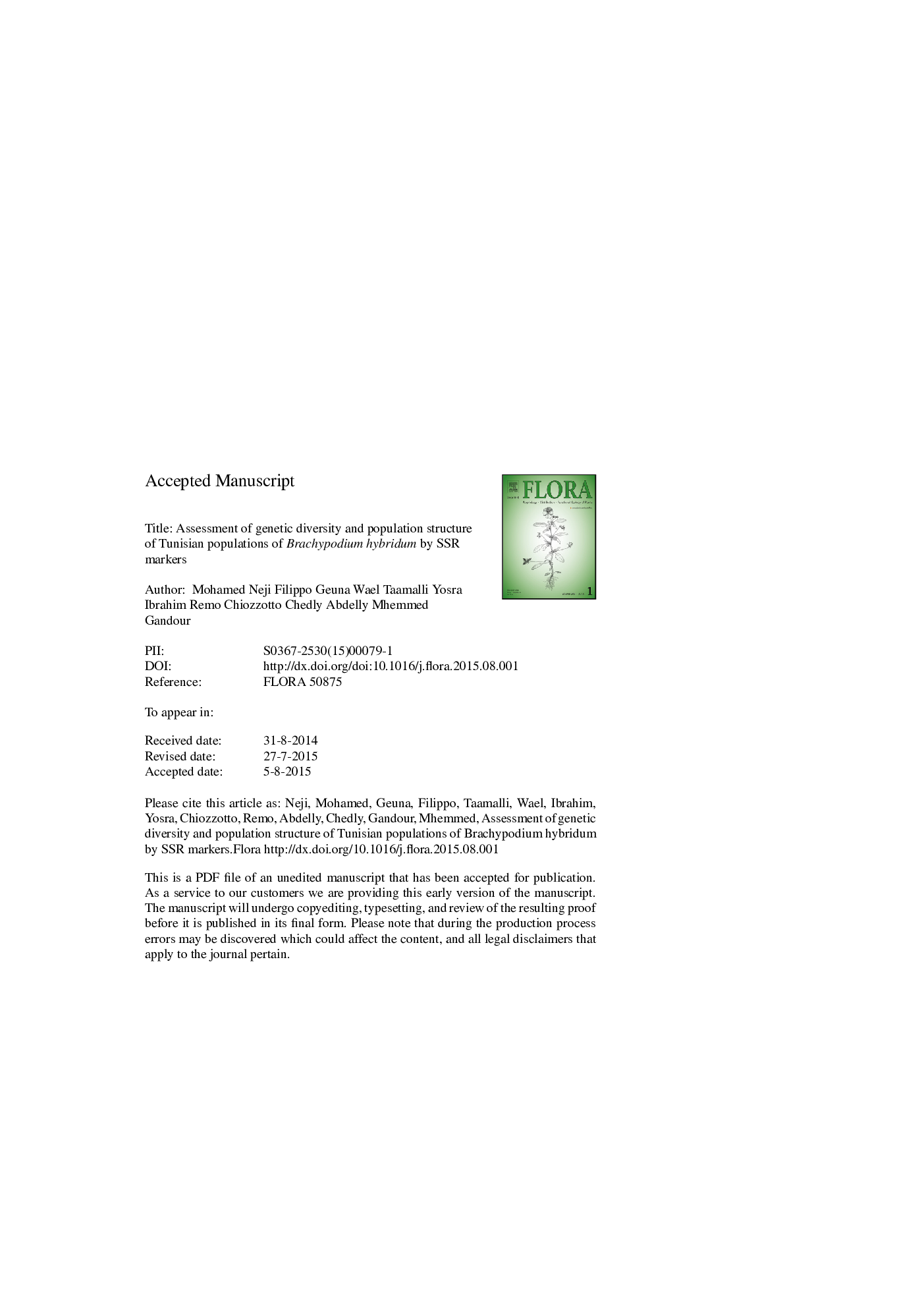| کد مقاله | کد نشریه | سال انتشار | مقاله انگلیسی | نسخه تمام متن |
|---|---|---|---|---|
| 8470316 | 1549943 | 2015 | 25 صفحه PDF | دانلود رایگان |
عنوان انگلیسی مقاله ISI
Assessment of genetic diversity and population structure of Tunisian populations of Brachypodium hybridum by SSR markers
دانلود مقاله + سفارش ترجمه
دانلود مقاله ISI انگلیسی
رایگان برای ایرانیان
کلمات کلیدی
موضوعات مرتبط
علوم زیستی و بیوفناوری
علوم کشاورزی و بیولوژیک
بوم شناسی، تکامل، رفتار و سامانه شناسی
پیش نمایش صفحه اول مقاله

چکیده انگلیسی
Brachypodium hybridum has recently been recognized as an allotetraploid species deriving from natural hybridization between B. distachyon and B. stacei. The identification of this species which emerged as a new model for polyploid species has spawned considerable scientific interest. A lot of investigations using highly variable markers and a broad geographical sampling are underway to understand the patterns of their genetic diversity and the contribution of polyploidy to adaptation. As a step towards understanding the genetic basis for natural variation of this species in Tunisia, 15 microsatellite markers and 145 genotypes representing 9 natural populations were used. Results exhibit a high level of polymorphism (159 polymorphic alleles with an average of 8.6 alleles per locus) and high level of genetic diversity in all the studied populations with expected and observed heterozygosities averaging 0.79 and 0.31, respectively. AMOVA resulted in a high variation within population (97%) and altitude as compared to the variation among populations (3%, ΦPT = 0.023), altitude and eco-region. Results also showed that the 9 populations grouped into 3 clusters without geographical or altitudinal clustering. This grouping was accompanied by a high rate of gene flow between populations (Nm = 2.31). Interestingly, Mantel test identified that the extent of genetic differentiation was not correlated to geographic distances (r = 0.046; p = 0.78) nor to the altitudinal differences (r = â0.29; p = 0.75). In the present study we report a high rate of successful cross-amplification of B. distachyon SSR markers in B. hybridum, which implies the great transferability between these two species. Moreover, genetic characterization of the Tunisian populations of B. hybridum by SSR markers suggests that the spatial genetic structure of this species may be affected by a multidirectional gene flow via long-distance seed dispersal, leading to a weak genetic structure.
ناشر
Database: Elsevier - ScienceDirect (ساینس دایرکت)
Journal: Flora - Morphology, Distribution, Functional Ecology of Plants - Volume 216, September 2015, Pages 42-49
Journal: Flora - Morphology, Distribution, Functional Ecology of Plants - Volume 216, September 2015, Pages 42-49
نویسندگان
Mohamed Neji, Filippo Geuna, Wael Taamalli, Yosra Ibrahim, Remo Chiozzotto, Chedly Abdelly, Mhemmed Gandour,